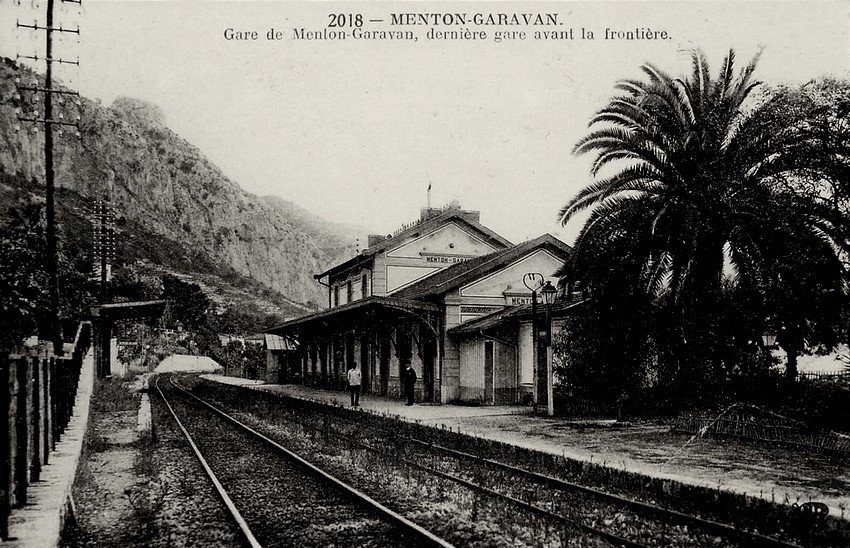
“Prochain arrêt, Menton!” Anyone who comes to Menton by train surely hears these words. Today it is almost impossible to imagine a Menton without its railway. Commuters, tourists and various other groups of people use it on a daily basis to traverse the French Riviera . The railway is not only crucial for Menton itself, but is also the lifeline which connects to the rest of France, as well as Italy by means of Ventimiglia. In light of the fundamental nature of these connections in modern day Menton, it is important to note that the railways were one of the first infrastructural projects carried out by France after Menton’s “rattachement” was the building of this railway spanning from Nice to Ventimiglia, Italy.
In economic terms, Menton was a verifiable island before the railway was built. Surrounded by hills and mountains that reach all the way to the seaside, it was nearly impossible before the 1860s to systematically inport and export goods inMenton. To combat the difficulties of land travel, trade was facilitated through the sea, although the town did not have a port at the time, see the section ‘The Port of Menton’, greatly limiting the town’s economic interconnectedness with the world. Through the state initiatives of the French government, this isolation was rectified by construction of the railway, which was finally inaugurated on December 9, 1869 to connect the cities and towns in the newly annexed County of Nice. Interestingly, Napoleon III personally wanted the line to be extended to Ventimiglia, lying on the other side of the border, since the nascent Italy was allied to France at the time, and Napoleon III saw the country as a long-term partner. Commerce also brings with it culture interaction, thus allowing Menton to both keep and strengthen its cultural ties with Italy. It should also be noted that the railway was built by Italian workers from Piedmont, who were employed by the French la Compagnie Paris-Lyon-Méditerranée; another example of how the railway brought both French and Italian influence to Menton.

Another aim of the French government in building the railway was to attain centralization in the newly annexed County by connecting it to Paris. Throughout history, empires have developed the infrastructure in their territories to ensure that the state ran efficiently. A few examples to this are the Royal Road of Persia and the Roman roads that passed through the vicinity of Menton. Just like the Romans, the French built a network of railways so that government officials and armies could travel around the country with relative ease. Connecting Menton to the capital was especially important since it is situated at the border with another country, an important factor in the nation-state era in Europe when wars between neighboring states were common.
The railway also allowed passengers to travel from London to Menton in 48 hours, making it a major factor in the transformation of Menton from an agricultural town to a tourist hotspot, as os discussed under ‘The Post-Annexation Tourism Boom’ and ‘Urbanization’. This rebranding affected the town so much that the French administration in Menton had to make several legislations to accommodate the tourists’ grievances and wishes.